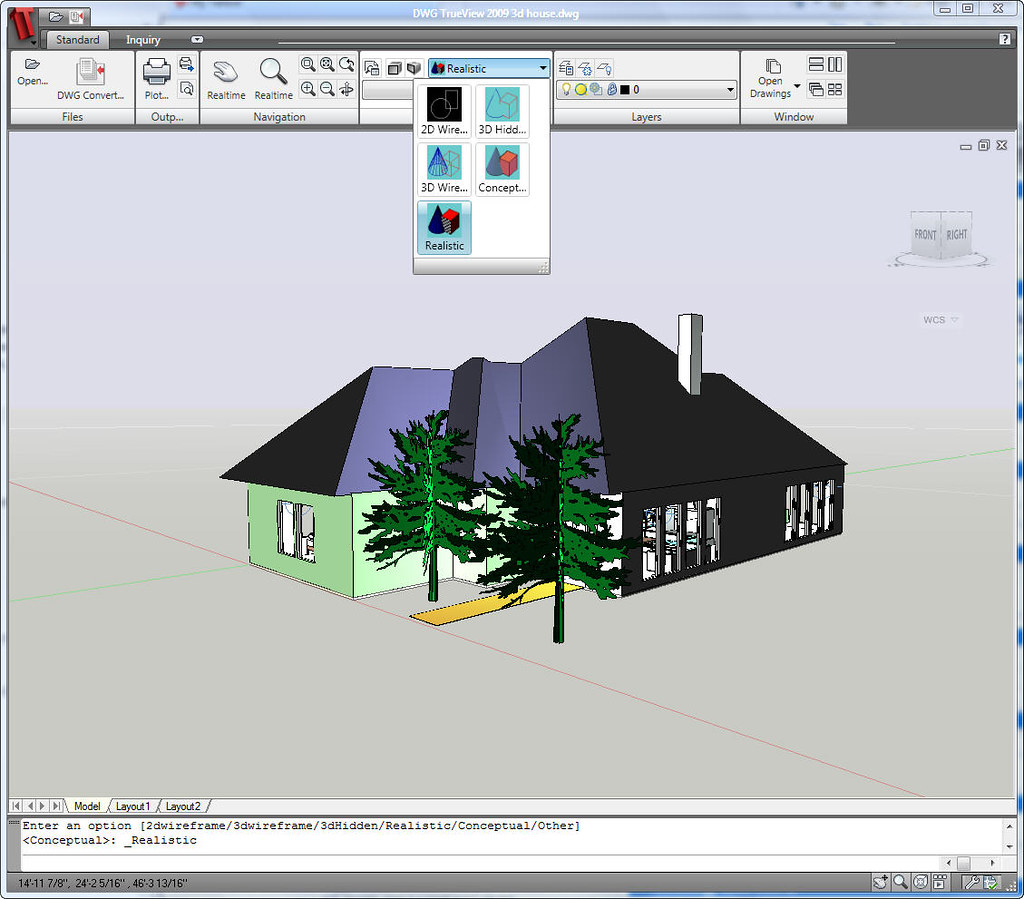Autodesk BIM stands at the forefront of transforming the architecture and construction landscape, ushering in a new era of efficiency and collaboration. By integrating intelligent 3D modeling and real-time data sharing, Autodesk BIM enables professionals to visualize projects with unprecedented clarity and precision.
This innovative software not only streamlines workflows but also enhances communication among stakeholders, making it an indispensable tool in modern design and project management. Key features such as clash detection, simulation, and lifecycle management empower teams to mitigate risks and optimize resources effectively.
Introduction to Autodesk BIM
Autodesk BIM (Building Information Modeling) represents a revolutionary approach to architectural design and construction management. By facilitating a collaborative environment among all project stakeholders, Autodesk BIM allows for integrated project delivery that enhances efficiency, reduces costs, and improves overall project outcomes.
The importance of BIM in modern architecture and construction cannot be overstated. It enables a shift from traditional 2D drawings to a comprehensive 3D model that encapsulates all dimensions of a project, including time and cost. This transition is pivotal for achieving enhanced accuracy and foresight in project planning and execution, ultimately leading to sustainable practices in the building industry.
Fundamental Concepts of Autodesk BIM
At the core of Autodesk BIM lies the integration of various data-rich models that represent the physical and functional characteristics of a facility. This approach not only showcases the geometric and spatial properties of the building but also incorporates critical information such as materials, structural elements, and systems within the design.
Key aspects of Autodesk BIM include:
- 3D Modeling: Autodesk BIM offers advanced three-dimensional visualization capabilities that allow architects and engineers to create realistic representations of their designs. This visualization aids in identifying potential issues early in the design process, minimizing costly modifications later on.
- Collaboration Tools: The software provides a collaborative platform that enables all stakeholders—including architects, engineers, contractors, and clients—to work together seamlessly. This collaboration enhances communication and ensures that everyone is aligned with the project goals.
- Data Management: Autodesk BIM allows for the management of extensive data associated with the building project. This includes specifications, schedules, and cost estimates, helping teams to maintain comprehensive project oversight.
- Lifecycle Management: Beyond design and construction, Autodesk BIM supports the entire lifecycle of a building, from planning and maintenance to renovations and eventual decommissioning. This holistic approach promotes sustainable building practices and efficient resource management.
“BIM is not just about creating 3D models; it’s about creating a shared understanding among project participants, enhancing decision-making, and optimizing project outcomes.”
Key Features of Autodesk BIM Software
Autodesk BIM software boasts a variety of features that enhance its usability and effectiveness in managing complex construction projects. Understanding these features is crucial for leveraging the full potential of the software in architectural and engineering practices.
Key features include:
- Interoperability: Autodesk BIM supports various file formats and integrates with other software applications, facilitating data exchange and collaboration across different platforms.
- Visualization and Simulation: Users can perform detailed simulations to assess building performance, energy efficiency, and environmental impact, enabling informed decision-making throughout the design process.
- Automated Documentation: The software automates the generation of construction documents, ensuring accuracy and reducing the time required for manual documentation efforts.
- Cloud Collaboration: Leveraging cloud technology, Autodesk BIM allows teams to access project data in real-time from any location, improving flexibility and responsiveness to project needs.
Through these features, Autodesk BIM enhances the architectural and construction processes, enabling teams to deliver projects that meet modern standards of efficiency, sustainability, and quality.
Applications of Autodesk BIM in Various Industries

Autodesk Building Information Modeling (BIM) has revolutionized the way various industries approach design, engineering, and construction. With its ability to enhance collaboration, improve efficiency, and streamline workflows, Autodesk BIM has found extensive applications across multiple sectors, most notably in architecture, engineering, and construction management. This content Artikels its significant contributions and real-world examples within these industries.
Applications of Autodesk BIM in Architecture
In the realm of architecture, Autodesk BIM serves as a powerful tool for architects to visualize and model complex structures before they are built. The software allows for precise design iterations, enabling architects to incorporate feedback and make adjustments in real time. This level of detail enhances communication with clients, stakeholders, and contractors, ensuring that everyone is on the same page regarding project specifications.
One notable application is the design of the One World Trade Center in New York City. Architects utilized Autodesk BIM to create detailed 3D models that not only facilitated the design process but also enabled the simulation of construction logistics and the assessment of structural integrity under various conditions. The result was a design that met both aesthetic and functional requirements while adhering to strict safety regulations.
Applications of Autodesk BIM in Engineering
Autodesk BIM is equally vital in the engineering sector, where it aids in the analysis and design of infrastructure projects. Engineers can leverage BIM for structural analysis, environmental impact simulations, and to ensure compliance with local codes and regulations. The integration of various engineering disciplines within a single model promotes collaboration among civil, mechanical, and electrical engineers.
A prime example includes the use of BIM in the Crossrail project in London. Engineers employed Autodesk BIM for the planning and execution of this ambitious underground railway project. By utilizing 3D models, they could visualize the interaction of various systems within the project, leading to optimized designs that minimized risks and reduced costs.
Role of Autodesk BIM in Construction Management
In construction management, Autodesk BIM plays a crucial role in enhancing the efficiency of project delivery. It facilitates better project planning, cost estimation, and scheduling through accurate modeling and data management. This not only helps in identifying potential issues before they arise but also improves resource allocation throughout the construction process.
For instance, during the construction of the San Francisco International Airport’s new terminal, Autodesk BIM was implemented to coordinate between numerous contractors and subcontractors. The use of a shared model allowed for real-time updates and changes, which streamlined communication and collaboration. As a result, the project was completed ahead of schedule and under budget, highlighting the effectiveness of BIM in minimizing delays and ensuring project success.
Benefits of Utilizing Autodesk BIM

Autodesk Building Information Modeling (BIM) provides a transformative approach to project management and collaboration across the construction and architecture industries. By integrating various aspects of design, planning, and execution within a digital model, Autodesk BIM fosters an environment that enhances communication and efficiency, ultimately leading to superior project outcomes. This section delves into the key benefits of utilizing Autodesk BIM, highlighting its advantages for project collaboration, efficiency gains over traditional methods, and cost-saving opportunities.
Advantages for Project Collaboration
The integration of Autodesk BIM into project workflows significantly improves collaboration among stakeholders. The centralized model allows various team members, including architects, engineers, and contractors, to work from a single source of truth. This not only minimizes the risks of miscommunication but also allows for real-time updates and modifications.
The collaborative advantages include:
- Real-Time Data Sharing: All parties can access the latest versions of the model, ensuring everyone is aligned with current designs and specifications.
- Enhanced Visualization: 3D modeling provides a clearer representation of project elements, enabling better understanding and discussions among non-technical stakeholders.
- Improved Conflict Resolution: BIM tools can identify design conflicts early in the process, allowing teams to address issues proactively rather than reactively.
- Streamlined Workflow: Automatic updates and notifications when changes occur facilitate smoother transitions and collaborations between disciplines.
Efficiency Gains Compared to Traditional Methods
Autodesk BIM enhances efficiency across the project lifecycle compared to traditional 2D drafting methods. The digital modeling approach automates many time-consuming tasks, such as quantity takeoffs and clash detection, enabling teams to focus on critical project areas.
Key efficiency gains include:
- Time Savings: Projects using BIM can experience significant reductions in design and construction time due to streamlined processes and fewer errors.
- Increased Productivity: Automated tasks free up valuable time for professionals to engage in more strategic planning and decision-making activities.
- Better Resource Management: BIM allows for precise tracking of resources, making it easier to optimize labor and material use throughout the project.
- Lifecycle Management: The data-rich models created in BIM can support facilities management beyond the construction phase, enabling ongoing efficiency improvements.
Cost-Saving Opportunities
Implementing Autodesk BIM can lead to substantial cost savings over the project lifecycle. By reducing waste, optimizing resources, and improving project timelines, BIM implementation becomes a financially sensible choice.
Cost-saving opportunities include:
- Reduction in Rework: Early detection of design issues minimizes delays and expenses associated with corrective actions during construction.
- Optimized Material Usage: Accurate quantity takeoffs ensure that materials are ordered precisely, reducing excess and minimizing waste.
- Lower Project Overheads: Enhanced collaboration and communication lead to fewer misunderstandings and disputes, decreasing administrative and overhead costs.
- Long-Term Savings: The lifecycle approach of BIM promotes ongoing efficiency, potentially lowering operational costs for facilities management long after project completion.
Future Trends in Autodesk BIM Technology
As the construction and design industries continue to evolve, Autodesk BIM technology is at the forefront of innovation. Emerging trends in this field are reshaping how professionals approach projects, enhance collaboration, and utilize data. This segment will delve into the anticipated developments in Autodesk BIM technology, focusing on the influence of artificial intelligence and cloud computing.
Emerging Trends in Autodesk BIM Technology
The landscape of Autodesk BIM is rapidly changing, driven by advancements in technology and the need for more efficient project management. Various trends are surfacing, including increased automation, improved interoperability between different software platforms, and enhanced visualization tools that incorporate virtual and augmented reality. These developments are aimed at streamlining workflows and improving overall efficiency in project delivery.
The integration of IoT (Internet of Things) devices is also becoming prevalent, allowing for real-time data collection and analysis. This enables construction teams to monitor progress, identify potential issues early, and make data-driven decisions.
Impact of Artificial Intelligence on Autodesk BIM
Artificial intelligence is set to revolutionize Autodesk BIM technology significantly. AI can analyze vast datasets to identify patterns, predict outcomes, and automate routine tasks. This has the potential to enhance decision-making processes, reduce errors, and optimize project timelines.
For instance, predictive analytics can foresee project risks, allowing teams to address potential delays before they occur. Machine learning algorithms can also assist in developing design solutions by analyzing previous projects and suggesting improvements.
Influence of Cloud Computing on Autodesk BIM
Cloud computing is transforming Autodesk BIM by providing a platform for collaboration and data storage that is accessible from anywhere. This flexibility allows teams to work in real-time, irrespective of their physical location, fostering a more collaborative environment.
One significant advantage of cloud-based BIM is the ability to handle large datasets securely and efficiently. Teams can easily share models, documents, and changes, reducing miscommunication and ensuring that everyone is working from the most current information.
Furthermore, cloud computing supports the integration of advanced technologies, such as AI and machine learning, into the BIM workflow, thus enhancing overall project efficiency.
“The future of Autodesk BIM technology lies in its ability to leverage AI and cloud computing to drive greater efficiency and collaboration.”
Detailed FAQs
What is Autodesk BIM?
Autodesk BIM is a software solution that integrates building information modeling to enhance design, construction, and project management processes.
How does Autodesk BIM improve collaboration?
It allows real-time sharing of data and models among all stakeholders, ensuring everyone is on the same page and reducing misunderstandings.
Can Autodesk BIM help in reducing project costs?
Yes, by improving efficiency and minimizing errors, Autodesk BIM can lead to significant cost savings throughout the project lifecycle.
What industries benefit from Autodesk BIM?
Autodesk BIM is utilized in numerous industries, including architecture, engineering, and construction management, enhancing processes across the board.
How does cloud computing impact Autodesk BIM?
Cloud computing facilitates easy access to BIM data from anywhere, enabling better collaboration and real-time updates across teams.